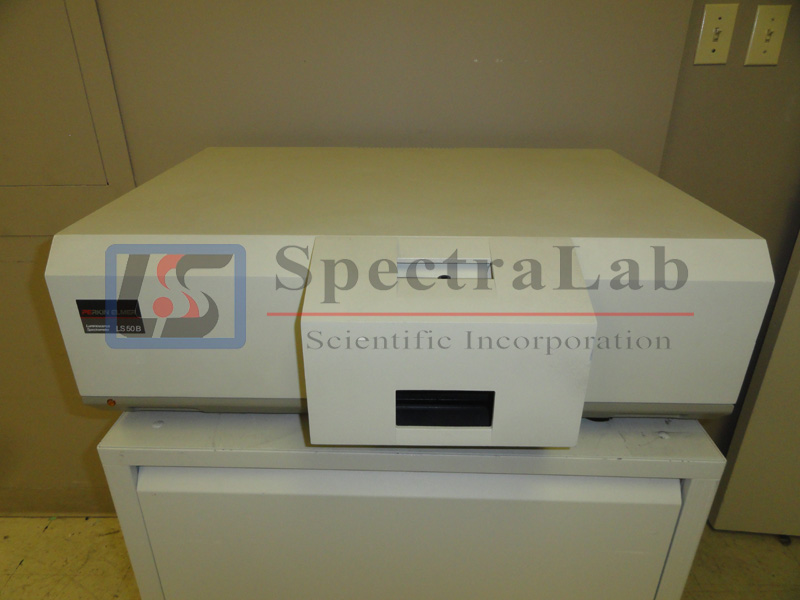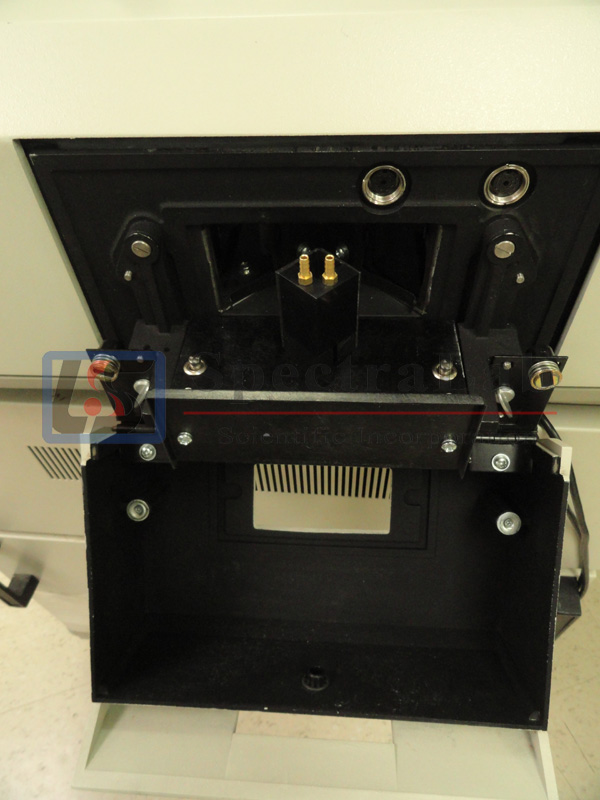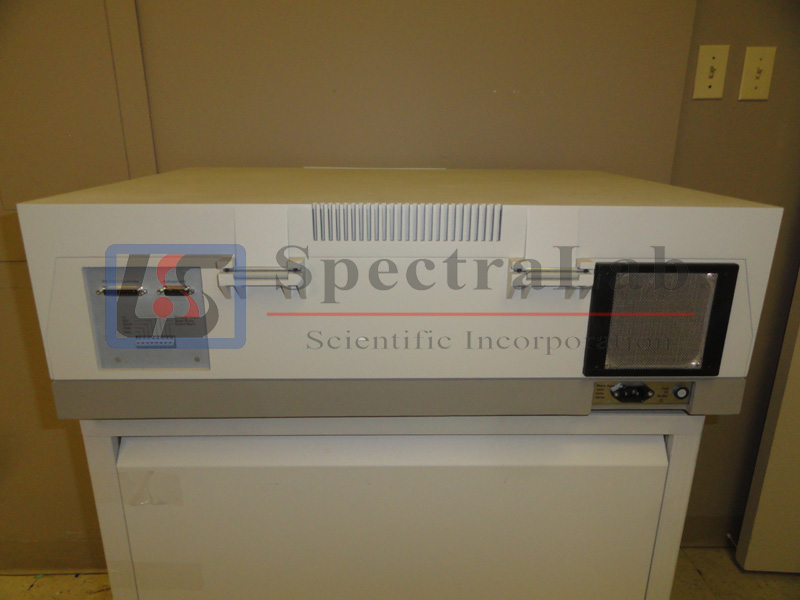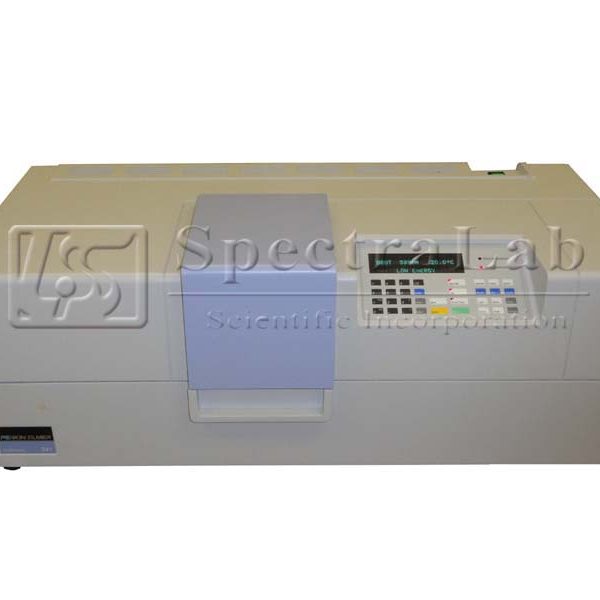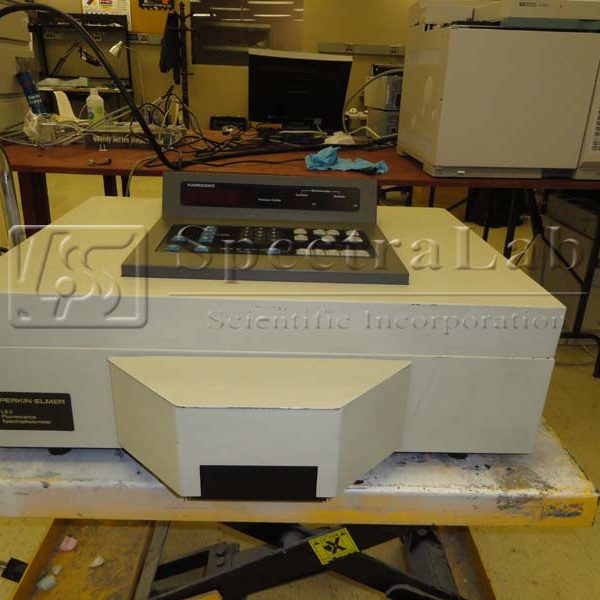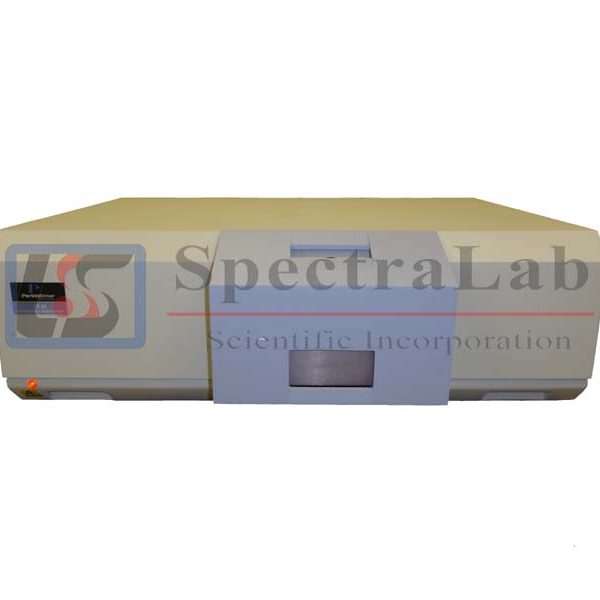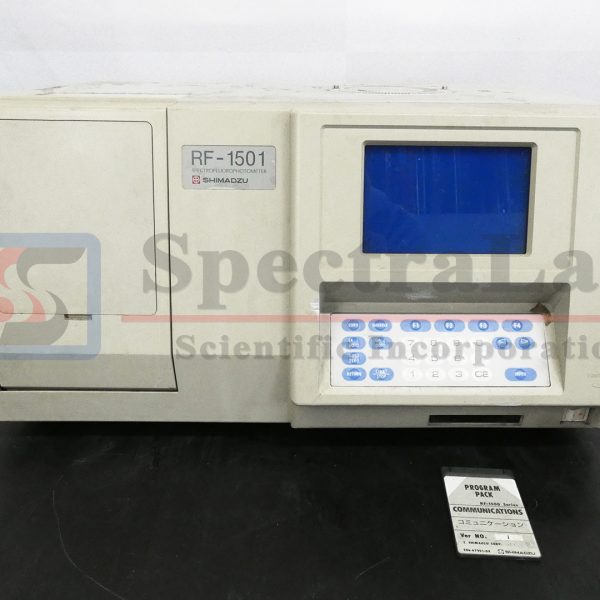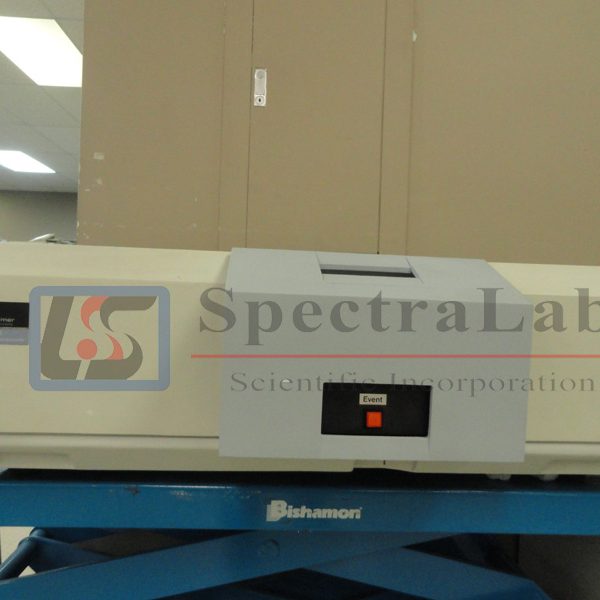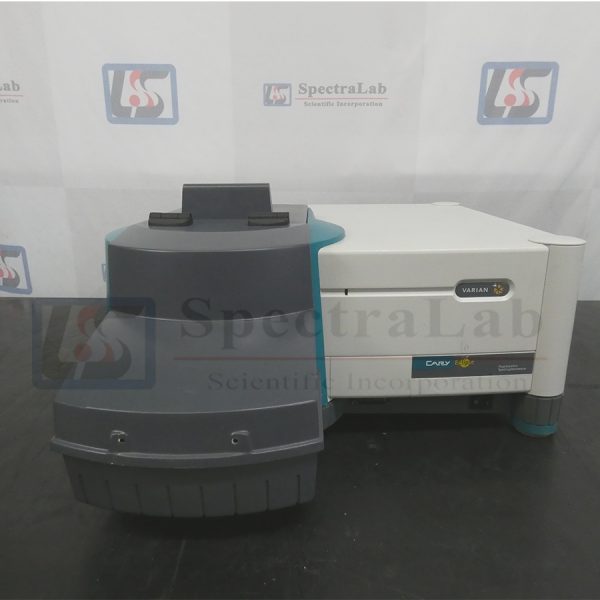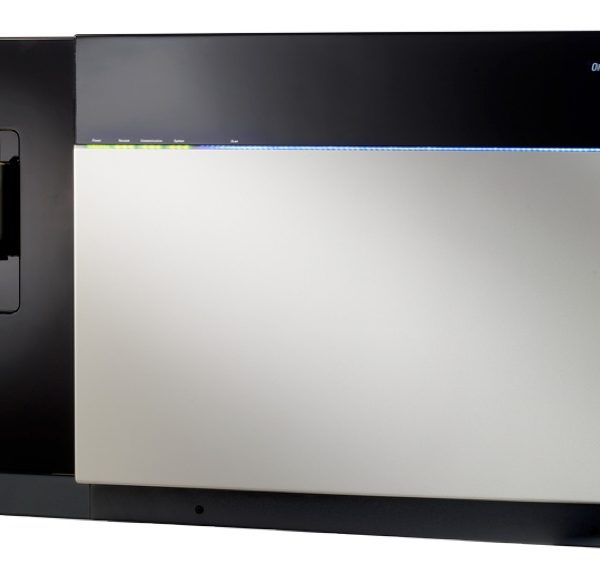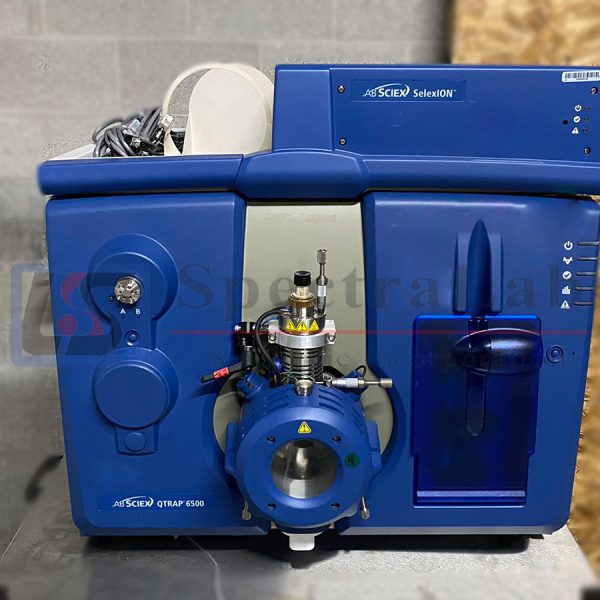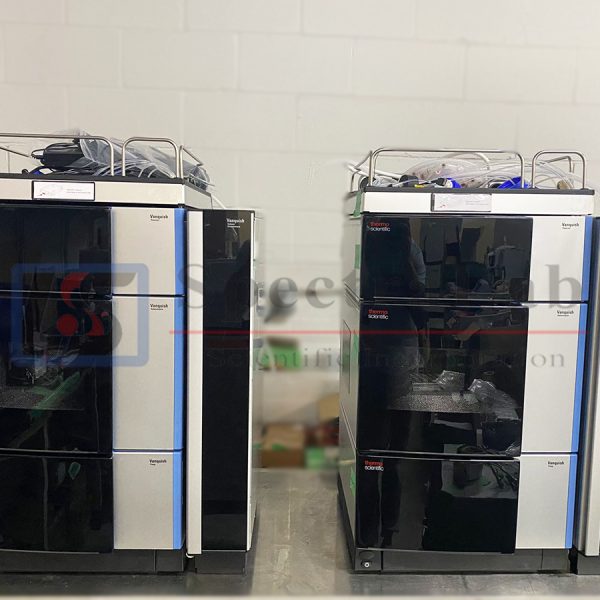The LS50B is a fluorescence/luminescence spectrophotometer with pulsed high pressure Xenon source. It is equipped with monochromators on both the excitation and emission sides and is capable of both excitation (200-800nm) and emission (200-900nm) scans. The Perkin Elmer software offers four operating modes: single scan, accumulation (for use with weak fluorophores or low concentration), kinetics or 3D mode. The sample mount does not have any temperature control capability.
The software runs in Windows XP and the workstation is part of the laboratory network. Hard copy printing is handled by the laboratory\’s workgroup printer. Electronic data can be retrieved either by use of a USB flash drive or by e-mailing the data as an attachment.
Specifications:
Principle: Computer controlled ratioing luminescence spectrometer with the capability of measuring fluorescence, phosphorescence, chemiluminescence and bioluminescence.
Source: Xenon discharge lamp, equivalent to 20 kW for 8 µs duration. Pulse width at half height <10 µs.
Sample detector: Gated photomultiplier with modified S5 response for operation up to around 650 nm. Red-sensitive R928 photomultiplier can be optionally fitted for operation up to 900 nm.
Reference detector: Gated photomultiplier with modified S5 response for operation up to around 650 nm.
Monochromators: Monk-Gillieson type monochromators cover the following ranges:
- Excitation 200-800 nm with zero order selectable.
- Emission 200-650 nm with standard photomultiplier with zero order selectable, 200-900 nm with optional R928 photomultiplier. Synchronous scanning is available with constant wavelength or constant energy difference.
Wavelength accuracy: +1.0 nm
Wavelength reproducibility: +0.5 nm
Spectral bandpass: The excitation slits (2.5-15.0 nm) and emission slits (2.5-20.0 nm) can be varied and selected in 0.1 nm increments.
Phosphorescence mode: Delay and gate times can be varied to measure phosphorescence. Minimum total period 13.0 ms (50 Hz)
Scanning speed: Scanning speed can be selected in increments of 1 nm for 10-1500 nm/min. Time-dependent data can also be collected.
Emission filters: Computer selectable cut-off (high-pass) filters at 290, 350, 390, 430 and 515 nm, a blank (to act as shutter), a 1% T attenuator and clear beam position.
Sensitivity: Signal to noise is 500:1 r.m.s., using the Raman band of water with excitation at 350 nm, excitation and emission bandpass 10 nm.
Standard cell holder: A single position water thermostattable holder for 10 mm cuvettes.


